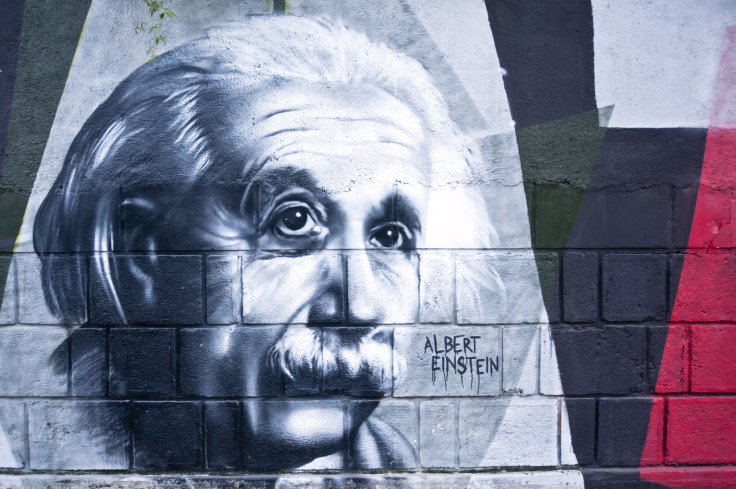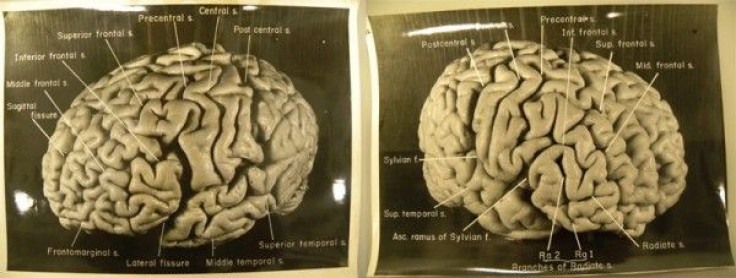Albert Einstein's Brilliant Brain's Long Journey After Death: An Autopsy Gone Greedy

Albert Einstein was by all measures a certifiable genius. He was a German-born Nobel prize-winning physicist, “father of the atomic bomb,” and one of the most well-known philosophers that science has ever seen. His contributions to society extend further than most legacies, but the abilities of his brain remain a mystery.
By the time he was 17, he was enrolled in a mathematics and teaching program. In his 20s, he created the theory of relativity, which explained the nature of space, time, light, energy, and gravity. So it’s no surprise when he died, the medical community wanted to know: What made his brain so different from the rest of ours? Was one section of his brain larger, smaller, more developed, or efficient than normal?
April 18 will mark 60 years since Einstein’s death in Princeton, N.J., and the start of a strange series of events to follow. He was 76 at the time of his death, but his brain continued on for decades afterward, where it was prodded, poked, photographed, sliced, and mailed around the world.

The Curious Quest of Einstein’s Brain
What happened to his brain? Einstein didn’t want his brain studied. In fact, he left specific instructions for his remains to be cremated and the ashes scattered secretly to avoid being worshipped at his resting ground. Dr. Thomas S. Harvey, the lead pathologist at Princeton Hospital disregarded Einstein and his family’s wishes the day he performed the autopsy. The same morning Einstein died, Harvey secretly removed his brain, kept it, and gave the body back for cremation without a word to the family.
Harvey eventually convinced Einstein’s reluctant son to let him keep the brain “in the interest of science.” Behind closed doors Harvey examined and photographed every inch of the brain but was soon fired from Princeton because he wouldn’t give the brain back. That’s when he made an irreversible decision and ran. He had the genius brain cut up into 240 cubed pieces, which he stored in two mason jars in his basement. For the next four decades, Harvey kept the brain and sent photographed copies and even pieces of the brain to doctors and researchers he deemed worthy enough to have a look.
Over the years, six peer-reviewed publications surfaced with various conclusions on the range of abilities and benefits his brain had on the average person. They believe certain sections had higher density of neurons than others and a greater ratio of cells that help neurons transmit messages to other parts. He also had a very thick corpus callosum, which are a bundle of brain fibers that are used to communicate from one side of the brain to the other. It was true: His brain had unusual qualities, with extra folds, denser neurons, and developed nodes, but today no one can be certain because of the damage done by Harvey.
We’ll never really know how to get a brain like Einstein himself, except for one trick — play an instrument. Einstein was an excellent violinist, even as a young child after being raised by a pianist for a mother. Musicians have highly developed communication lines between the left and right hemisphere of their brain, just like Einstein. However, a person must being learning an instrument before the age of 11 in order for the brain to develop this special muscle. When Einstein had a difficult time with a math or physics problem, he was known for picking up his violin and playing until he worked the problem out in his head.
Einstein’s brilliant brain was created with a combination of nature and nurture, but science will fail to truly understand the magnitude of its unique abilities. It’s true, Harvey did seek out other researchers to help him unravel the structural abnormalities that could have given Einstein an advantage, but he failed in the approach. After traveling cross country with a reporter and the brain in his trunk in the early 1990s, the story was finally released into the world. Einstein’s brain was removed from Harvey’s possession and now remains at the pathology lab where it started, along with a “hands off” policy.



























